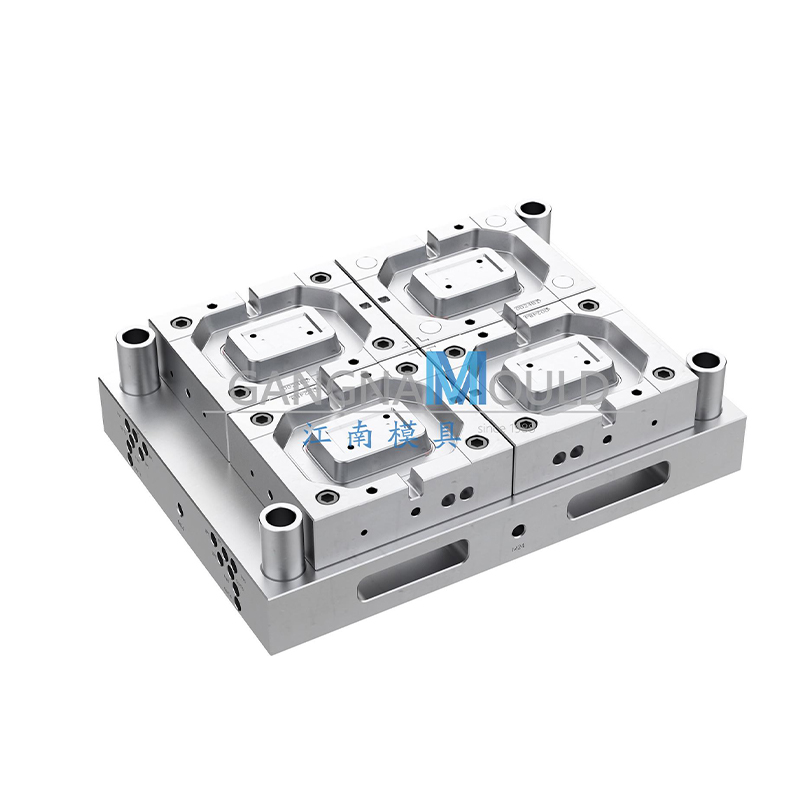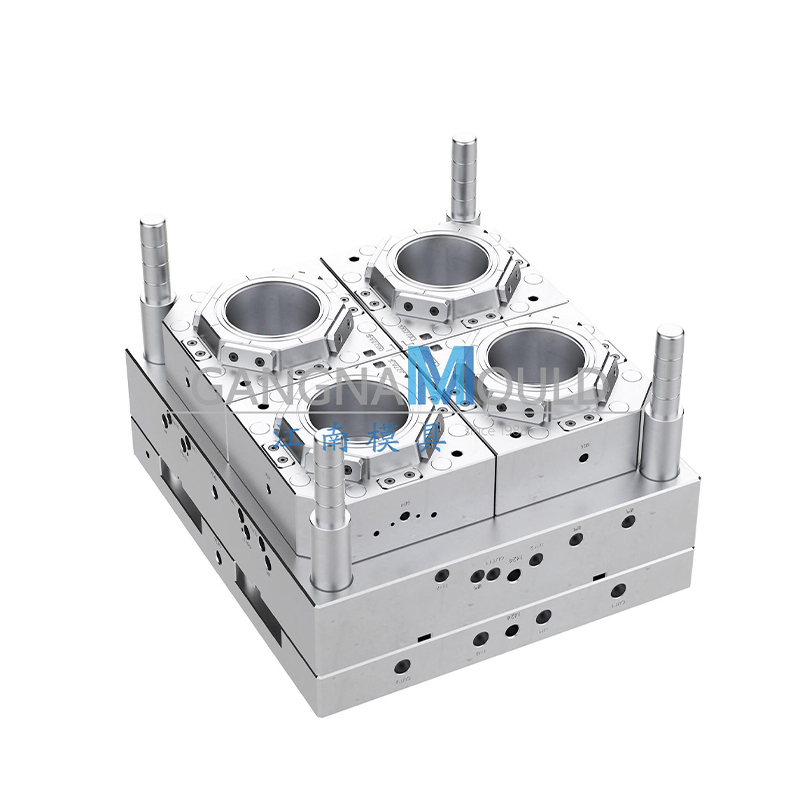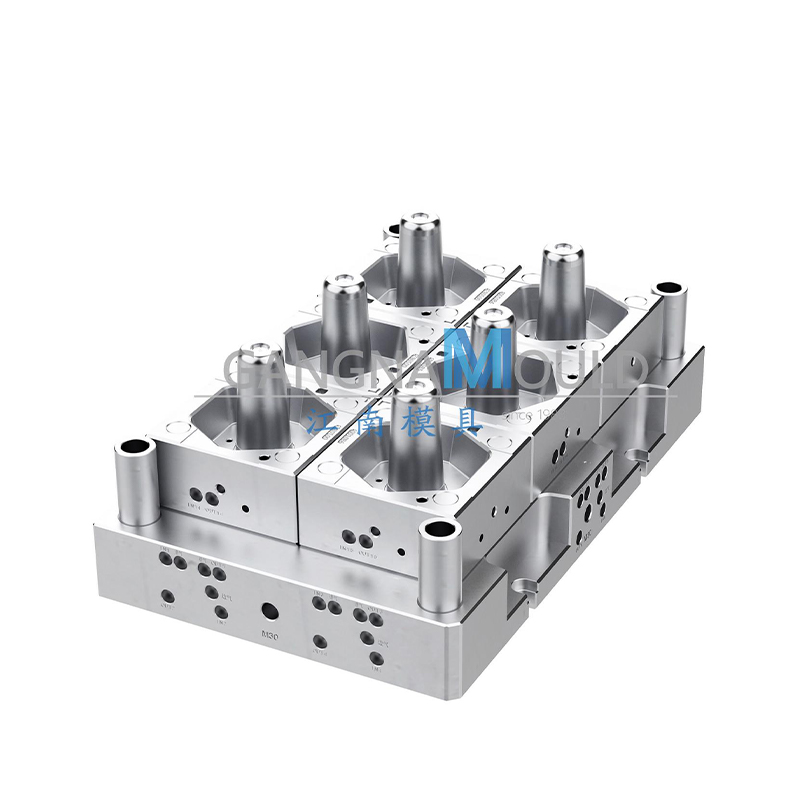Thin Wall Injection Molds Manufacturers
Thin wall injection molds are engineered to produce lightweight plastic parts with minimal wall thickness, typically used in food packaging, disposable containers, and medical-grade components. These molds require extremely high precision to ensure fast injection, complete filling, and tight dimensional tolerances.
Key challenges in thin wall molding include maintaining structural rigidity and preventing warping or flow marks. The mold must support high-speed injection and rapid cooling to achieve short cycle times without compromising product quality. As such, steel hardness, thermal conductivity, and gate design are critical factors in mold performance.
To handle thin walls—often less than 1 mm—the mold is equipped with high-pressure injection systems and optimized flow paths. Hot runner systems are frequently used to maintain material temperature and reduce gate marks or defects. Advanced mold materials such as H13 steel and specialized coatings are selected for their wear resistance and thermal stability.
These molds are especially useful for producing disposable plastic packaging like yogurt cups, takeaway boxes, and medical containers. Manufacturers in the food and healthcare sectors rely on thin wall molds to produce large volumes with minimal material usage and consistent performance.
-

JN-075 High-speed injection molding thin-wall food container mold
Contact Us -

JN-076 High-speed injection molding thin-wall food container mold
Contact Us -

JN-077 Thin-walled plastic injection molding disposable cup mold
Contact Us -

JN-078 Thin-wall plastic injection molding disposable cup mold
Contact Us -

JN-080 Thin-walled plastic round cup injection mold
Contact Us -

JN-079 Thin-walled plastic round cup injection mold
Contact Us
ABOUT GANGNAM MOULD
At Gangnam Mould, we specialise in the R&D and manufacturing of high-precision moulds. We design and produce plastic moulds for a variety of everyday items, logistics packaging (such as trays and turnover boxes), household appliances, and hollow blow moulding.
Thanks to our advanced technology and extensive experience, we are able to provide efficient and reliable mould solutions to customers around the world, helping them to improve productivity and market competitiveness.
Gangnam Mould now complies with ISO 9001:2015 QMS and looks forward to building long-lasting business relationships with clients and suppliers worldwide.
- 1000+ successfully executed projects.
- Excellent product quality and thoughtful customer service.

Our 37 years of customization experience has created a Gangnam-Mould brand value.
Our Proven Management System & Our Professional R&D Strength
Committed to ISO 9001 standards and a customer-centric approach, the company has built a comprehensive mold R&D and manufacturing platform, earning the trust of leading clients across industries — a true hidden champion in the field.
-

Certificate
-

Certificate
-

Certificate
News & Blogs
Industry knowledge
Thin wall box moulds are precision-engineered tools used to produce lightweight plastic boxes with uniform wall thickness and smooth surfaces. They are designed to maintain dimensional accuracy and structural integrity, ensuring consistent quality in every box. Thin wall box moulds are suitable for storage, packaging, and organizational applications, offering durable, stackable, and practical solutions for various environments.
Reinforced Packaging Box Injection Moulds for Stackable Storage
Packaging box injection moulds are specialized tools used to produce plastic packaging boxes for storage, transport, and retail applications. Constructed from high-grade steel or aluminum, these moulds are designed to withstand repeated production cycles while ensuring precise dimensions, smooth surfaces, and consistent wall thickness. This allows manufacturers to produce high-quality boxes suitable for a variety of uses, from household storage to commercial packaging solutions.
The injection molding process involves melting plastic material and injecting it into the mould cavity under controlled pressure. Once cooled, the material solidifies into the shape of the box. Multi-cavity moulds can be used to produce multiple packaging boxes simultaneously, improving production efficiency and reducing manufacturing costs. Packaging box moulds are also adaptable to different plastic materials, such as polypropylene and polyethylene, providing flexibility for diverse product requirements.
Functionality is a key aspect of these moulds. Features such as reinforced corners, stackable designs, and smooth inner surfaces ensure that the boxes are strong, practical, and easy to handle. Customization options allow manufacturers to create boxes in various sizes, shapes, and textures, meeting specific consumer or industrial needs.
Cleaning, inspection, and timely lubrication prevent wear and small defects, ensuring consistent quality throughout production runs. Well-designed moulds also reduce issues like warping, uneven walls, or surface imgoodions.
In conclusion, packaging box injection moulds are crucial in producing reliable, functional, and uniform plastic boxes. They combine engineering precision, material versatility, and efficient manufacturing techniques to meet modern storage and packaging demands.
Injection Mould Techniques for High-Speed Thin Wall Production
Thin wall injection moulds are precision tools used to manufacture lightweight plastic products with thin, uniform walls. Designed from durable steel or aluminum, these moulds are engineered to maintain structural integrity and accurate dimensions during high-speed injection molding processes. They are widely used for producing items such as storage boxes, food containers, trays, and packaging components.
The injection molding process involves melting plastic and injecting it into the mould cavity under precise pressure and temperature controls. Thin wall injection moulds are often optimized for high-volume production, allowing rapid cycle times while small material consumption. Multi-cavity designs are frequently employed to produce several products simultaneously, increasing efficiency and reducing production costs.
These moulds are designed for both durability and practicality. Smooth surfaces, reinforced edges, and accurate wall thickness ensure the final products are strong, functional, and aesthetically consistent. They can accommodate various plastic materials, including polypropylene and polyethylene, allowing manufacturers to produce versatile items suitable for storage, transportation, and everyday use.
In summary, thin wall injection moulds are essential in producing lightweight, durable, and high-quality plastic products. They integrate engineering precision, material flexibility, and efficient production techniques, supporting manufacturers in delivering consistent, functional items for a variety of applications.



 English
English русский
русский Español
Español Français
Français عربى
عربى 简体中文
简体中文


